GetFeedback has earned its place as one of the go-to platforms for collecting customer feedback. With its Salesforce integration and easy-to-use survey features, it’s popular among teams that want to gather quick insights and close the loop efficiently. It’s clean, functional, and user-friendly for many businesses.
But here’s the thing: just because a tool is widely used doesn’t mean it’s the right fit for everyone. We have come up with the top 8 best GetFeedback alternatives and competitors, each bringing its own pros and cons to the table. Whether you are focused on customer experience, NPS tracking, visual forms, or AI-driven insights, this list will help you find a better match for your goals.
Top 8 GetFeedback Alternatives & Competitors
Here is a quick overview of the best GetFeedback alternatives & competitors:
- piHappiness
- Typeform
- Lucidya
- SurveySparrow
- Retently
- Qualaroo
- Paperform
- Delighted (by Qualtrics)
piHappiness
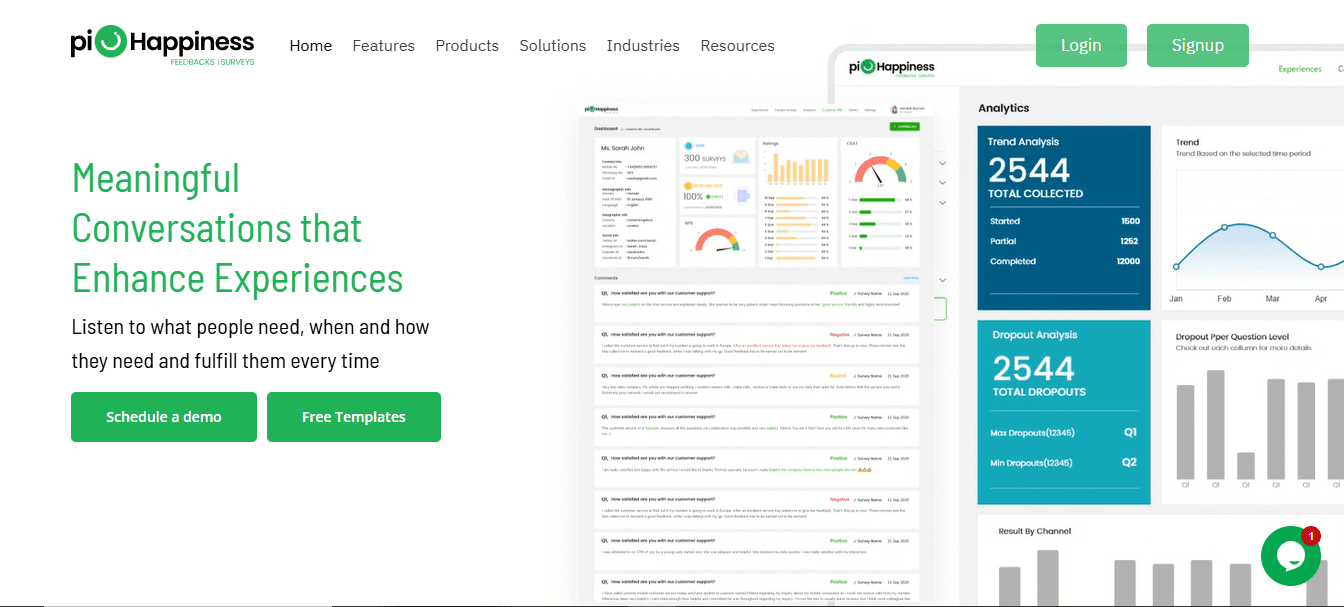
If you are looking for an end-to-end customer experience platform, piHappiness is one of the best GetFeedback alternatives. It is designed to help businesses collect real-time feedback from their customers through multiple channels — kiosks, QR codes, email, SMS, social media, and more. Whether you are in hospitality, healthcare, or retail, piHappiness adapts well to various industries and offers a very user-friendly interface for both businesses and customers.
One of the standout features is that you can set up hierarchy and track satisfaction across branches, service types, or departments. In addition, the platform offers multilingual support, so it is ideal for businesses with a diverse customer base. The dashboard provides quick insights, and automatic case management (via piSupport) helps teams close the loop faster.
Compared to other platforms, piHappiness offers quite a bit of flexibility in creating hierarchies and assigning surveys to different levels of the organization. This makes it easy for large businesses with multiple locations to stay organized and focused on improvements.
Pros:
- Easy-to-use, user-friendly platform
- Industry-specific survey themes and templates
- Advanced analytics and detailed reports
- Real-time alerts and automated case handling
- Quick and seamless integrations
Cons:
- Limited number of free templates
Pricing:
- 15 days free trial
- Custom pricing depending on your needs
Typeform
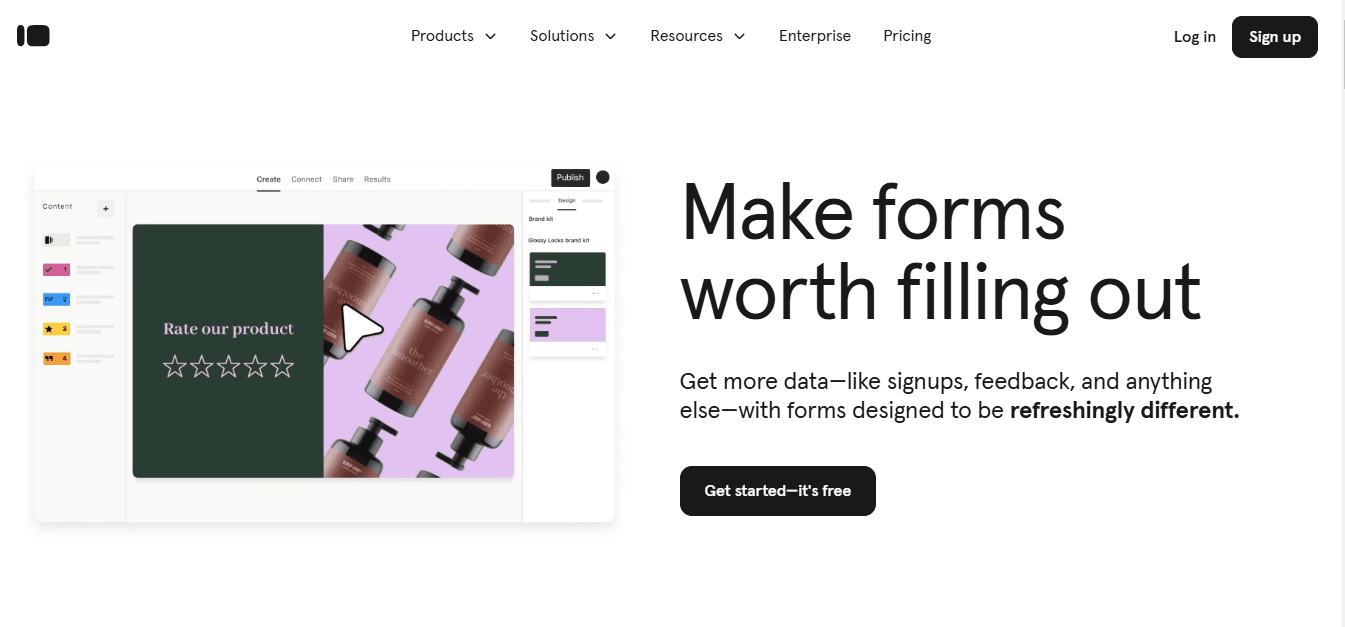
Typeform is best known for turning boring surveys into conversations. It offers sleek, interactive forms that feel more like chatting with a friend than answering a questionnaire. If you are big on design and user experience, this tool is right up your alley. It is particularly popular with startups, agencies, and design-conscious brands.
The logic jumps, custom layouts, and variety of question types make it great for collecting rich insights. Typeform also integrates with dozens of other platforms like Slack, Google Sheets, and HubSpot, which makes it ideal if you’re running marketing or product feedback loops.
That said, while it’s visually stunning, Typeform is more form-centric than insight-focused. It is better suited for collecting data than deeply analyzing it. If you are looking for an all-in-one CX platform with dashboards and automated workflows, this may not fully replace GetFeedback’s scope.
Pros:
- Visually appealing, conversational surveys
- Great for lead generation and simple feedback
- Easy to use and well-documented
Cons:
- Limited analytics features
- Can get pricey with higher response limits
Pricing:
- Free plan
- Starts at USD 25 per month
Lucidya
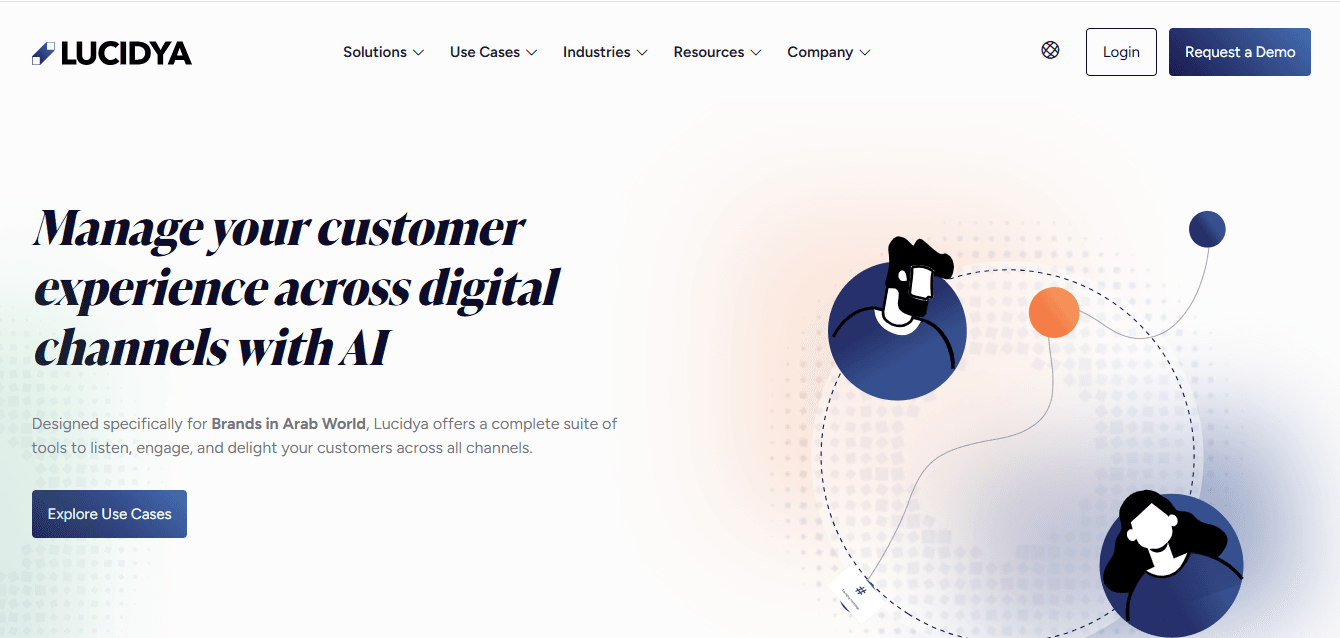
Lucidya is an AI-powered customer experience and sentiment analysis tool built for Arabic-speaking markets. It is great for brands that want to understand customer voices on social media, emails, and surveys. If you want a platform that goes beyond just survey feedback and taps into online mentions and reviews, Lucidya brings that intelligence together.
One of the best features of Lucidya is that it combines traditional feedback with social listening. This gives brands a complete 360-degree view of customer sentiment — what they say directly and what they say behind your back (like on Twitter or blogs). For companies in the Middle East or with Arabic-speaking audiences, Lucidya’s native language support is a major plus.
However, it’s more geared toward analytics and insights rather than hands-on survey creation or multi-touch feedback journeys. Therefore, it is best used alongside CRM or CX strategies that need deep listening and AI insights.
Pros:
- Strong in Arabic sentiment analysis
- Combines surveys, reviews, and social listening
- AI-powered customer intelligence
Cons:
- Less customizable in survey design
- Focused on analytics rather than collection
Pricing:
- Custom quotation
SurveySparrow
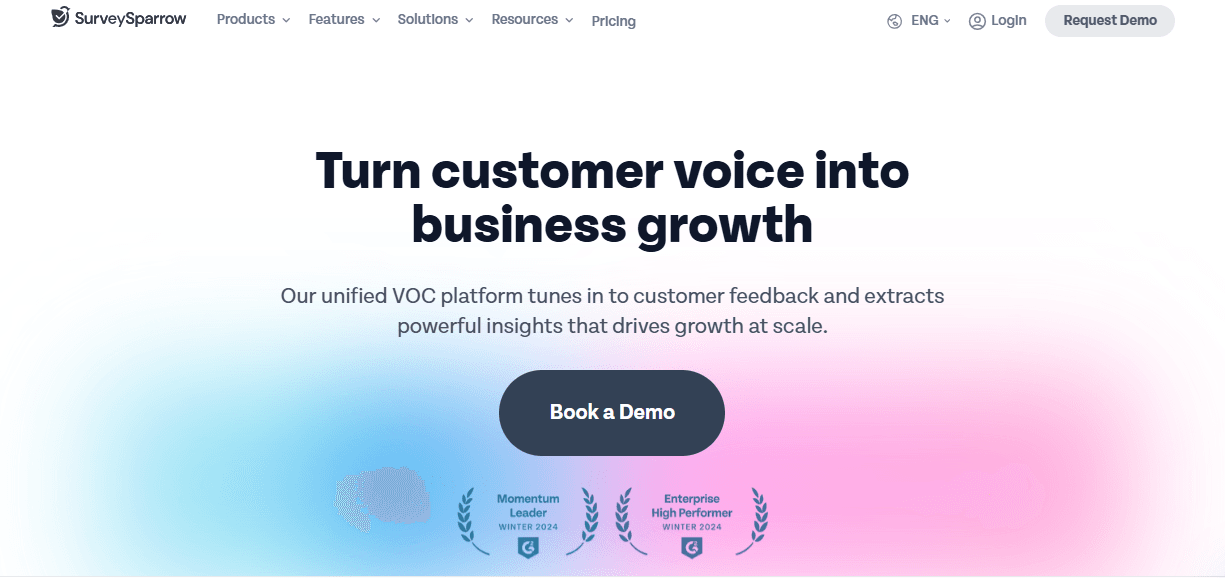
SurveySparrow is one of the few feedback tools that blends traditional survey platforms with conversational interfaces and automation. It offers both one-off surveys and recurring feedback setups, making it great for everything from employee check-ins to customer satisfaction tracking.
Its unique dual interface — classic and chat-like — gives respondents a smoother experience. Features like recurring surveys, audience management, and integrations with Zapier or Salesforce make it a pretty comprehensive feedback platform. In addition to that, the UI is polished and easy to navigate.
SurveySparrow also has a neat feature called NPS 2.0, which lets you track Net Promoter Score trends over time — ideal for product and customer success teams. But its reporting isn’t as advanced as some enterprise-level tools, so you might feel a bit limited if you need deep custom dashboards.
Pros:
- Conversational surveys and classic forms
- Good automation and integration support
- Easy recurring survey setup
Cons:
- Reporting can be basic
- Not ideal for enterprises
Pricing:
- 14 days free trial
- Free plan
- Starts at USD 19 per month
Retently
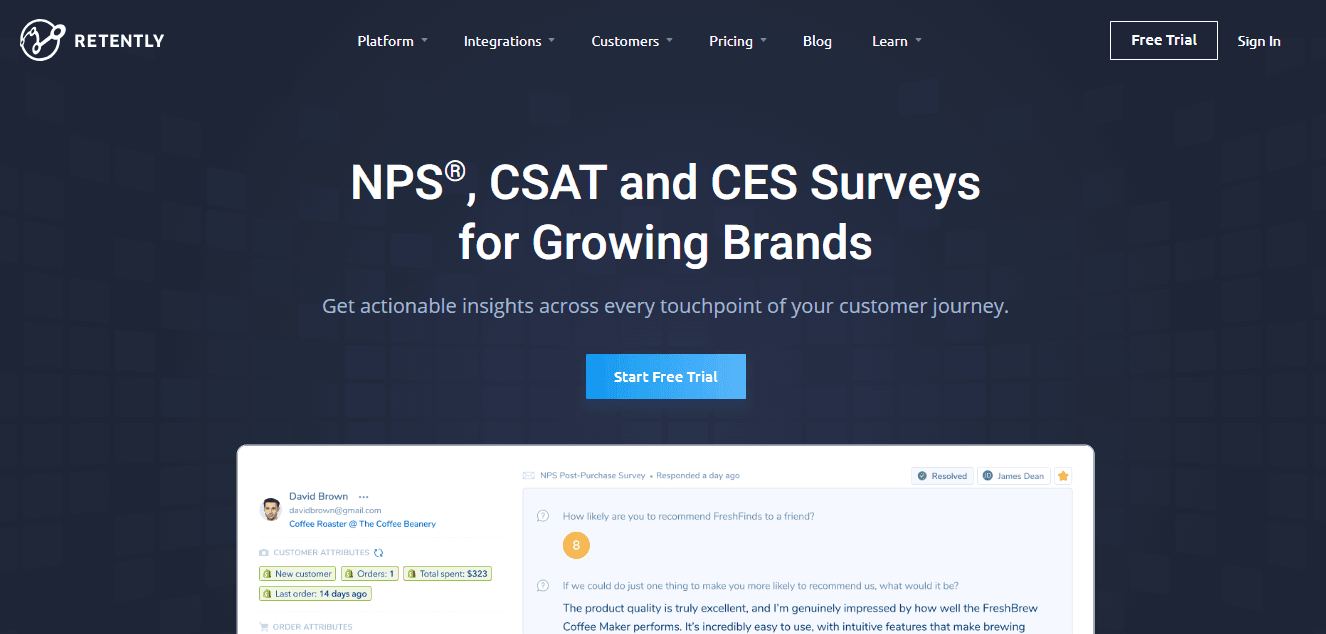
If your primary goal is to track NPS (Net Promoter Score) in a clean, simple way, Retently is one of the best GetFeedback alternatives. It focuses entirely on customer loyalty metrics — NPS, CSAT, and CES — and does it very well. The interface is intuitive, and it is built for businesses that want to keep an eye on customer sentiment with minimum friction.
Retently’s automation workflows are relatively strong. You can schedule recurring surveys, follow up based on scores, and automatically tag responses. The analytics dashboard is designed specifically for customer success and product teams to identify trends and act quickly.
That said, Retently is not a general-purpose survey tool. If you want detailed survey customization or multi-step feedback journeys, you might find it a bit limiting. It’s ideal for focused use cases rather than broad customer experience programs.
Pros:
- Great for NPS, CSAT, and CES tracking
- Clean, minimal dashboard
- Good customer support
Cons:
- Limited language options
- Limited question types and layout customization
Pricing:
- 14 days free trial
- Starts at USD 44 per month
Qualaroo
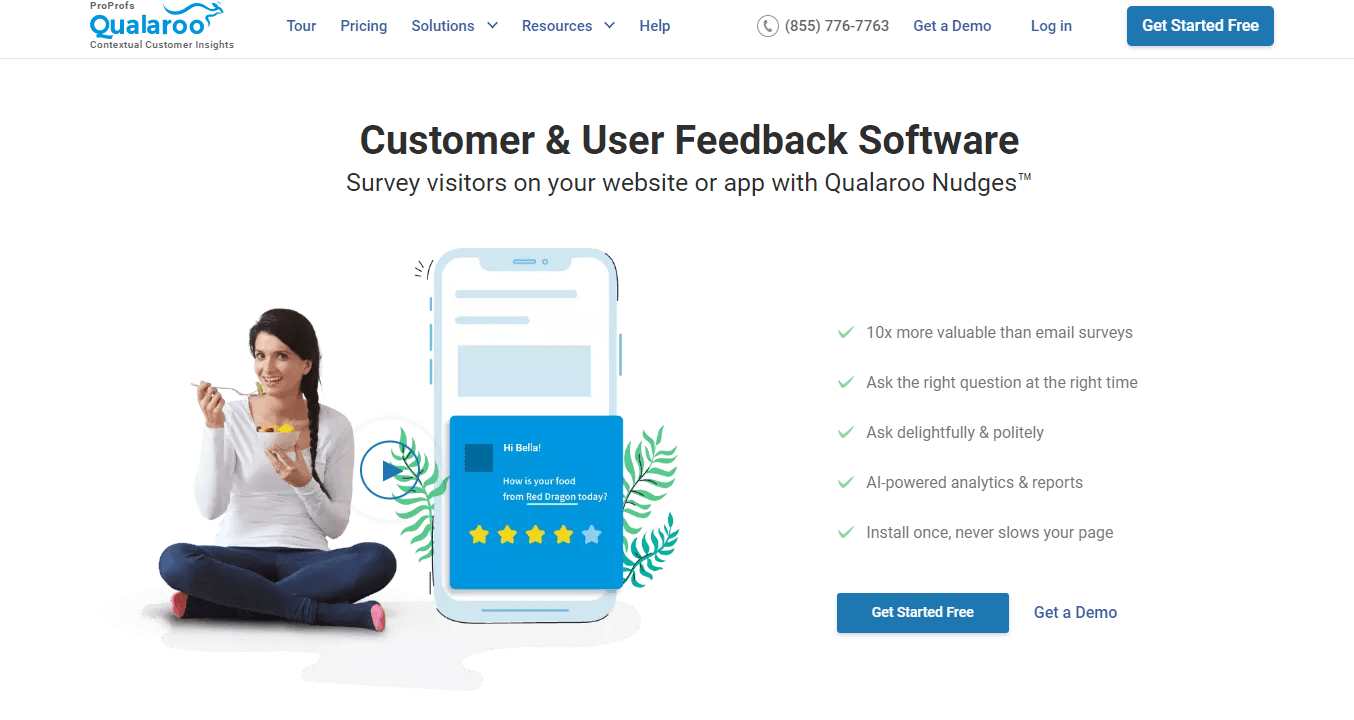
Qualaroo is a user feedback and research tool that is particularly powerful for gathering insights directly on your website or app. It is perfect for product teams and UX researchers who want real-time, in-context responses.
The platform uses “Nudges,” small pop-up surveys that appear at just the right moment, like when a user is about to leave a page or after they have interacted with a product feature. You can target specific user segments and behaviors, making the feedback super relevant and actionable.
While Qualaroo doesn’t offer traditional long-form surveys or advanced logic flows, it is built to help you ask short, impactful questions exactly where it matters. It is a great way to understand why users behave the way they do without pulling them away from what they are doing.
Pros:
- In-product and on-site feedback capture
- Advanced targeting and behavioral triggers
- Great for UX and CRO teams
Cons:
- Not suitable for long-form surveys
- Limited reporting visuals compared to others
Pricing:
- 14 days free trial
- Free plan
- Starts at USD 19.99 per month
Paperform
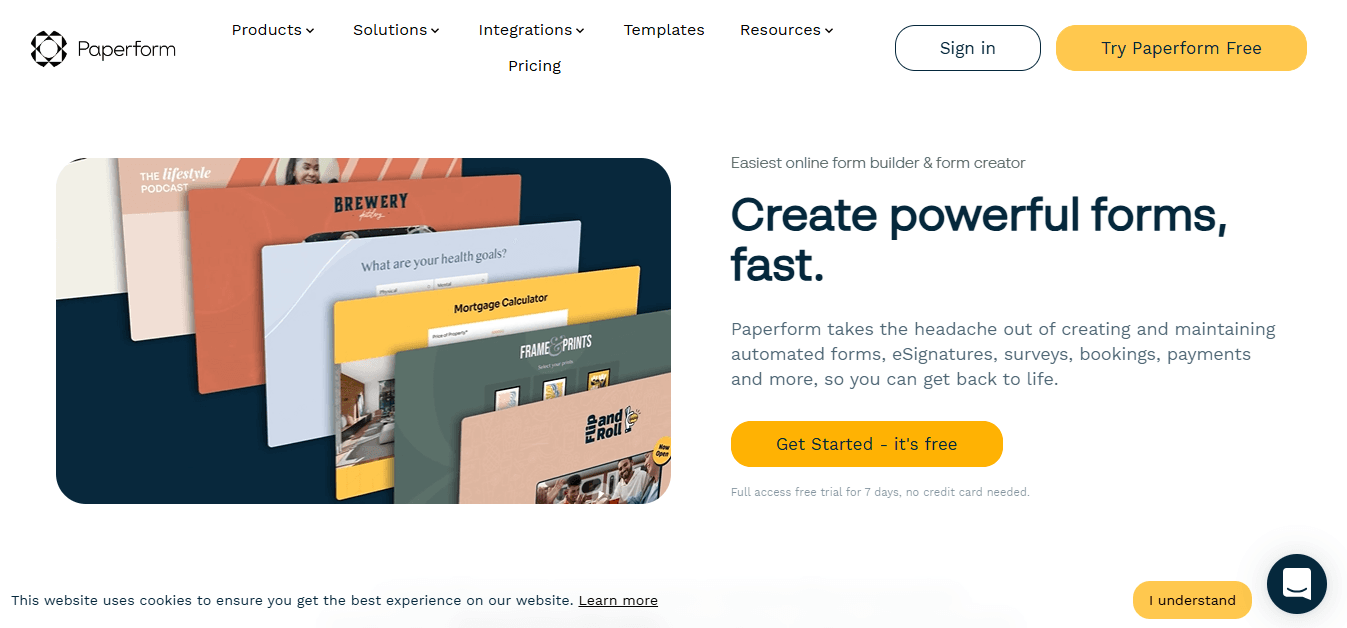
Paperform is one of the best GetFeedback competitors that blends form-building, automation, and design. It is not just a survey tool—it’s like building a mini landing page that can include surveys, payment forms, bookings, and more. If flexibility and branding are important to you, Paperform is the best choice.
You can fully customize the design, add media elements, and even use calculation fields for things like quotes or cost estimations. In addition to that, it integrates with tools like Zapier, Google Sheets, Notion, and Stripe, allowing a lot of automation and workflow power.
It’s great for small businesses, consultants, or creators who need forms that do more. However, for enterprise-level survey analytics or feedback management, it may lack some depth compared to others on this list.
Pros:
- Highly customizable, all-in-one form builder
- Supports payments, bookings, and calculations
- Easy automation via integrations
Cons:
- Limited number of question types
- Not purpose-built for feedback analytics
Pricing:
- 7 days free trial
- Starts at USD 24 per month
Delighted

Delighted is known for its simplicity and speed in capturing customer feedback using NPS, CSAT, CES, and 5-star rating surveys. It’s part of the Qualtrics ecosystem but focuses on being lightweight and easy to set up for businesses of any size.
You can send surveys through email, web, SMS, and even in-app. Delighted also allows you to automate follow-ups and track trends over time. It’s especially useful for SaaS companies and e-commerce brands that want to keep a constant pulse on customer sentiment without a steep learning curve.
Delighted doesn’t offer deep customization or complex survey branching. If you want a plug-and-play feedback tool that integrates with Slack, Zendesk, and Shopify, this is a great choice.
Pros:
- Fast setup, user-friendly
- Supports multiple feedback channels
- Clean reporting and dashboard
Cons:
- Limited customization and survey logic
- Fewer question types compared to others
Pricing:
- 14 days free trial
- Free plan
- Starts at USD 17 per month
Wrapping up
Whether you want detailed survey customization, conversational forms, AI-backed sentiment analysis, or seamless integrations with your existing tools, there’s an alternative on this list that can deliver. From flexible platforms like piHappiness to visually engaging tools like Typeform, each option offers something slightly different—so your choice really comes down to what matters most for your team.
Take your time exploring the demos, comparing features, and thinking about what kind of feedback experience you want to create—not just for your business, but for your customers too. A well-chosen platform can make all the difference in how you listen, learn, and improve.








